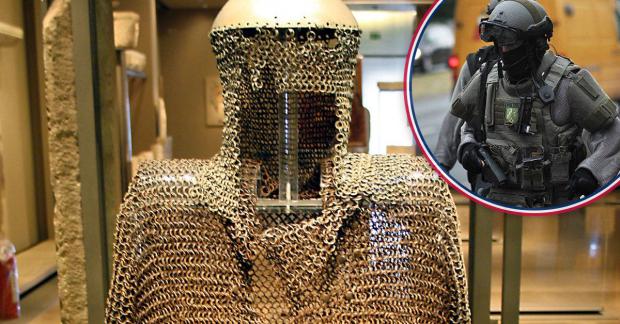
Breaking News
 Defense Bill Includes Hundreds of Millions for Ukraine, NATO Countries, Israel, and More
Defense Bill Includes Hundreds of Millions for Ukraine, NATO Countries, Israel, and More
 A New Constitution for CANADA! My Interview with Bruce Pardy
A New Constitution for CANADA! My Interview with Bruce Pardy
 Trump "Sick Of Meetings" About Ukraine War As Biden Goes Broke
Trump "Sick Of Meetings" About Ukraine War As Biden Goes Broke
 Andy Schoonover - Scam Is Over, The Old Health Care System Is Being Replaced With The New
Andy Schoonover - Scam Is Over, The Old Health Care System Is Being Replaced With The New
Top Tech News
 This tiny dev board is packed with features for ambitious makers
This tiny dev board is packed with features for ambitious makers
 Scientists Discover Gel to Regrow Tooth Enamel
Scientists Discover Gel to Regrow Tooth Enamel
 Vitamin C and Dandelion Root Killing Cancer Cells -- as Former CDC Director Calls for COVID-19...
Vitamin C and Dandelion Root Killing Cancer Cells -- as Former CDC Director Calls for COVID-19...
 Galactic Brain: US firm plans space-based data centers, power grid to challenge China
Galactic Brain: US firm plans space-based data centers, power grid to challenge China
 A microbial cleanup for glyphosate just earned a patent. Here's why that matters
A microbial cleanup for glyphosate just earned a patent. Here's why that matters
 Japan Breaks Internet Speed Record with 5 Million Times Faster Data Transfer
Japan Breaks Internet Speed Record with 5 Million Times Faster Data Transfer
 Advanced Propulsion Resources Part 1 of 2
Advanced Propulsion Resources Part 1 of 2
 PulsarFusion a forward-thinking UK aerospace company, is pushing the boundaries of space travel...
PulsarFusion a forward-thinking UK aerospace company, is pushing the boundaries of space travel...
 Dinky little laser box throws big-screen entertainment from inches away
Dinky little laser box throws big-screen entertainment from inches away
 'World's first' sodium-ion flashlight shines bright even at -40 ºF
'World's first' sodium-ion flashlight shines bright even at -40 ºF
Bulletproof chainmail? Next-gen fabric stiffens on demand

A new example of this type of shape-shifting technology is modeled on ancient chain mail armor, enabling it to swiftly switch from flexible to stiff thanks to carefully arranged interlocking particles.
The material was developed by scientists at Singapore's Nanyang Technological University and Caltech in the US, who describe it as a type of "wearable structured fabric." In physics terms, its capabilities are enabled by what's known as a jamming transition, the same principle that causes vacuum-sealed rice or beans to stiffen when packed up tight, leaving the particles with little room to move.
The team set out to develop a fabric that can be easily transitioned from soft and foldable to rigid and load-bearing, pointing to the way Batman's cape can turn into a glider in 2005's Batman Begins, as an example. To do this, the team began investigating how structured but hollow particles could be interlocked to form a fabric with stiffness that could be altered on command.
"Inspired by ancient chain mail armor, we used plastic hollow particles that are interlocked to enhance our tunable fabrics' stiffness," says study author Assistant Professor Wang Yifan. "To further increase the material's stiffness and strength, we are now working on fabrics made from various metals including aluminum, which could be used for larger-scale industrial applications requiring higher load capacity, such as bridges or buildings."
The team's octahedron-shaped particles are 3D printed with nylon plastics into a chain mail-like arrangement, which is then encapsulated in a plastic envelope and compacted using a vacuum. This increased the packing density, pulling the carefully designed particles in and increasing the points of contact between them, resulting in a structure that is 25 times more rigid.



